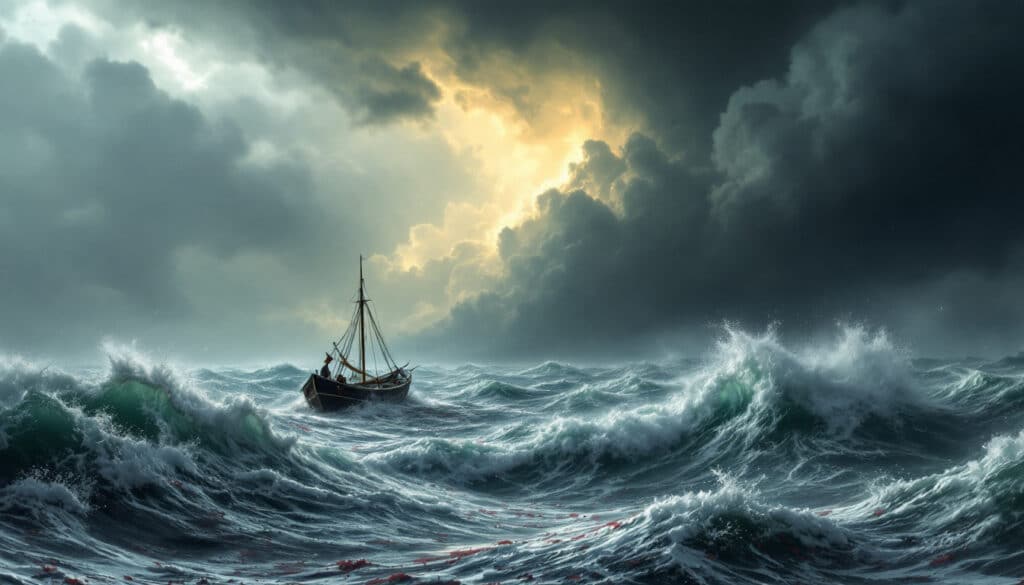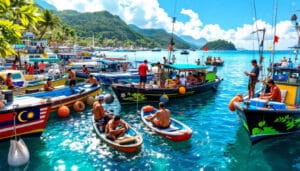The ceasefire in Gaza offers a glimmer of hope in securing maritime routes
Despite this agreement, the defensive operations carried out by the Greek military of the European Union persist to ensure the protection of ships in the Red Sea. The political instability in the region continues to pose a threat to vital maritime transport, particularly due to the actions of the Houthis. This ceasefire agreement, although significant, does not mean the immediate end of attacks on ships, leaving the maritime sector in a precarious situation. Delays in sailing schedules reflect the persistent tensions, despite a 70% improvement in timeliness since February 2024. The future of navigation in this strategic area will largely depend on political stability and the commitments of the involved parties. International actors remain vigilant to developments to ensure safe and unhindered navigation.
Table of Contents
ToggleThe collapse of the ceasefire makes navigation in the Red Sea highly volatile
The Red Sea, for decades, has been a vital artery for global maritime trade. However, the recent collapse of the ceasefire between Israel and Hamas has plunged this strategic region into increased uncertainty, making navigation highly volatile. This complex situation influences not only the safety of ships but also global supply chains.
What are the immediate impacts of the collapse of the ceasefire on maritime security?
The collapse of the ceasefire has immediately heightened tensions in the Red Sea region. Since November 2023, attacks from the Houthis, a rebel group based in Yemen, have escalated their campaign against ships, specifically targeting crucial maritime routes. Over 100 attacks have already been recorded, disrupting maritime traffic and increasing risks for crews.
The Greek military of the European Union, responsible for the defensive operation Aspides, continues to protect ships in the Red Sea despite the cessation of hostilities in Gaza on January 15. Their presence is essential to ensure the safety of navigation routes and prevent further attacks. However, the persistence of tensions means the threat of attacks remains high, making navigation unpredictable.
Additionally, uncertainties surrounding the intentions of the Houthis add another layer of complexity. If the rebel movement does not fully disengage, ships must remain vigilant and prepare emergency plans to respond to potential attacks, thereby increasing operational costs and delivery delays.
How does the collapse of the ceasefire affect maritime traffic and international trade?
Maritime traffic in the Red Sea is a key element of international trade, linking Europe, Asia, and the Middle East. The collapse of the ceasefire has led to increased delays and logistical costs. Sailing schedules, initially delayed by 4 to 6 days, have seen a 70% improvement since February 2024, but remain unstable due to the persistent attacks.
Shipping companies must now navigate an uncertain environment, directly impacting global supply chains. The disruption of routes in the Red Sea forces companies to consider longer and costlier alternative routes, thus increasing delivery times and costs for end consumers.
Moreover, the ongoing uncertainty discourages investment in the maritime sector of the region. Companies hesitate to increase their fleet or invest in new technologies, thus stifling innovation and economic growth. This situation could also affect the markets for essential components for shipping, such as the Bunker Fuel Market in Singapore, a global hub for maritime energy.
What are the challenges for shipping companies operating in the Red Sea?
Shipping companies operating in the Red Sea face several major challenges since the collapse of the ceasefire. Firstly, the safety of ships is a primary concern. The risks of attacks by rebel groups like the Houthis require enhanced security measures, increasing operational costs and complexities for companies.
Next, inventory management and route planning become more complicated. Ships must anticipate at-risk areas and adapt their routes accordingly. This often involves costly detours that not only increase transport costs but also prolong delivery times. To optimize these aspects, it is crucial to learn how to optimize inventory management to avoid losses and maximize profits.
Furthermore, the political volatility of the region creates uncertainty that affects companies’ strategic decisions. Investing in the maritime sector now requires a thorough risk analysis and increased flexibility to quickly adapt to changes. The current situation highlights the importance of resilience and adaptability for market players.
What are the implications for global supply chains?
The Red Sea is a crucial shipping route for transporting goods between Asia, Europe, and the Middle East. The collapse of the ceasefire has significant repercussions for global supply chains, causing disruptions that can impact various industrial sectors.
Delays in product delivery can lead to shortages, affecting factories and retailers that depend on these flows to maintain their operations. For example, the automotive and electronics sectors, which heavily rely on imported components via maritime routes, could experience costly production delays.
Additionally, fluctuations in fuel prices due to uncertainty in the region can also impact transportation costs. Compounds like the Bunker Fuel Market in Singapore are particularly sensitive to geopolitical instabilities, which can lead to price increases and affect the profitability of shipping companies.
What resilience mechanisms are adopted by the maritime industry?
In the face of increased volatility in the Red Sea, the maritime industry has had to develop resilience mechanisms to minimize risks and ensure operational continuity. One of the key aspects of this resilience is the diversification of navigation routes. Shipping companies are exploring alternative routes, although this may lead to additional costs and longer delays.
Moreover, the adoption of advanced technologies plays a crucial role in improving safety and efficiency in operations. The use of sophisticated monitoring systems, artificial intelligence for route management, and real-time communication solutions enables quick responses to threats and changes in maritime conditions. These technologies are essential for anticipating and responding to potential attacks, thus ensuring the safety of crews and cargoes.
Additionally, companies invest in training their crews to handle crisis situations. A well-trained and prepared workforce is essential for effectively managing incidents at sea, reducing risks and minimizing potential impacts on operations.
What is the future of navigation in the Red Sea amid current tensions?
The future of navigation in the Red Sea largely depends on the evolution of the geopolitical situation in the region. If the involved parties can restore a lasting ceasefire, this could contribute to stabilizing the region and restoring confidence in maritime safety. In this scenario, trade flows would resume their normal pace, fostering economic recovery and investment in the maritime sector.
However, if tensions persist or escalate, navigation in the Red Sea could remain highly volatile. Ongoing attacks by rebel groups, combined with international rivalries, could make maritime routes even more dangerous and unpredictable. In this context, shipping companies will need to continue adapting their strategies to navigate an uncertain environment, emphasizing flexibility, safety, and innovation.
Furthermore, international initiatives aimed at strengthening cooperation and maritime security will be crucial in mitigating risks. Organizations like the European Union and local maritime authorities play a key role in implementing protective and monitoring measures to ensure the safety of navigation routes.
For an in-depth analysis of the strategic interests of the United States in Greenland, consult this article.
—
Sources and further reading:
- Safety concerns resurface after a speedboat carrying 85 tourists in Bali caught fire
- The United States is intensifying its rivalry with China on the seas
- Activities in the Gulf of America – Bureau of Ocean Energy Management
- Fishing targets for bass in 2025: Essential tips for beginners, experts and enthusiasts
- How to optimize inventory management to avoid losses and maximize profits?









